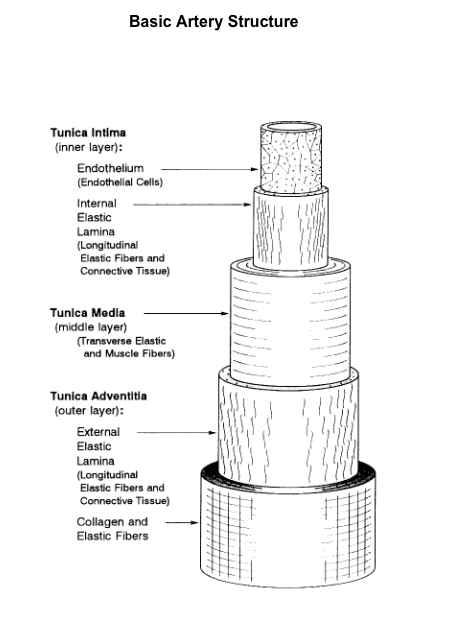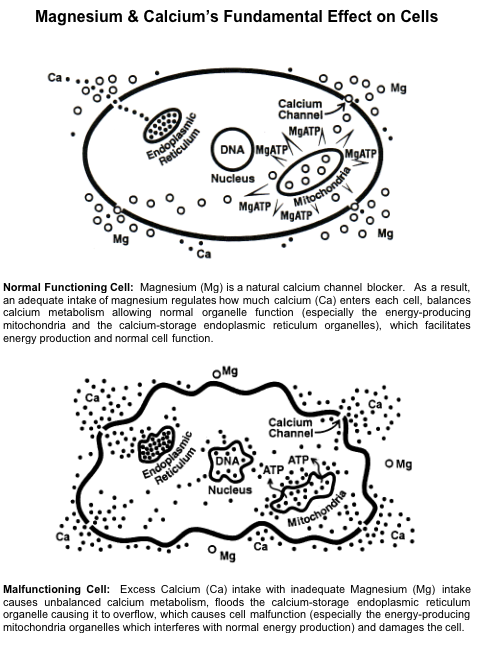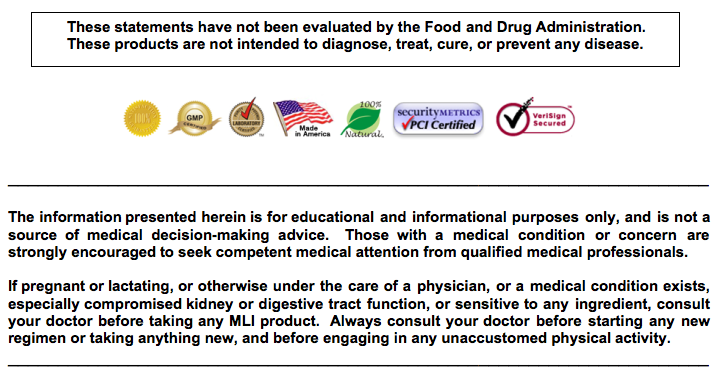Normal Functioning Cells = Health & Longevity
The human body is composed of cells, an estimated 100 trillion of them. All organs and tissues, even the portion of the blood that carries life-sustaining oxygen, are cells. Cells are living, dynamic, and vitally functioning clumps of protoplasm surrounded by a selectively permeable protective membrane. All cells, which originated as non-specific stem cells in the beginning, became specialized for whatever organ or tissue they comprise (such as heart and brain cells), and for whatever specialized function they have (such as oxygen-carrying red blood cells). Cells are the basis of life.
Cells contain numerous very tiny organ-like structures called organelles. Like the organs within the human body, it is the organelles within cells that provide the cell’s dynamic quality and allow the cells to function. Just like the human body, how well each organelle functions determines how well the whole structure functions. Healthy functioning organelles means healthy functioning cells, healthy functioning cells means healthy functioning organs and tissues, and healthy functioning organs and tissues forms the basis for health and longevity.
Cells maintain their function by taking in three basic things: Nutrients, water and oxygen. After the cells use what they need to maintain their function, the cells then eliminate waste byproducts. This functional cellular process is what is known as metabolism. A normal functioning metabolism is normal functioning cells.
Of course, to function normally the cells need adequate nutrients, water and oxygen. Any inadequacy of these three will compromise normal cell function. In a real sense, the quality and quantity of nutrients, water and oxygen are the primary determining factors in normal cellular function – and cellular dysfunction. Other factors that can cause or contribute to cell dysfunction are the exposure to environmental pollutants and ingestion of toxins. To remain healthy and to thrive, the cells need adequate and balanced nutrients, water and oxygen, and minimal exposure to pollutants and toxins. Anything less contributes to cellular dysfunction.
Cellular dysfunction (cells not functioning normally) weakens the cell and is what sets the stage for poor health conditions. Cellular dysfunction has also been identified by several research scientists as the first step that leads to eventual cell demise – and aging. According to these research scientists, aging is a sequence of cellular “dysfunction, damage, demise and decay” which occurs at a gradually increasing rate that eventually becomes faster than the worn out or damaged cells can be replenished with new cells. Cells that naturally wear out with the passage of time is considered normal aging. Cells that are damaged to the point of dysfunction by an improper diet and/or toxin exposure is considered premature aging. It is currently thought that the regular intake of certain nutrients may help slow the normal aging process, and may help prevent premature aging. Such nutrients include: Omega-3 fatty acids, CoQ10, vitamins C and E, and the essential mineral magnesium. (Reference: Linus Pauling Institute, Life Extension, International Association of Gerontology and Genetics, et al.)
One of the most important groups of cells are the cells that line the interior of the arteries, the endothelial cells. The arteries are obviously important for they are the blood vessels that transport the nutrients, water and oxygen to the cells throughout the entire body, while the veins transport metabolism waste byproducts (such as carbon dioxide) for elimination. The endothelial cells, which come into direct contact with the contents of the bloodstream, are a single layer of cells (known collectively as the endothelium) that serve to protect the rest of the blood vessel structure while acting as a kind of a barrier/buffer for the contents of the bloodstream.
The endothelial cells line the entire circulatory system, from the heart to the smallest capillaries. They form an interface between circulating blood (the bloodstream) and the rest of the blood vessel wall. Endothelial cells, as an integral part of blood vessel walls, are very specialized cells that are involved in many aspects of vascular biology, such as: 1. Vasoconstriction and vasodilation (hence, help control blood pressure); 2. Blood clotting (thrombosis and fibrinolysis); 3. Dystrophic calcification; 4. Angiogenesis (formation of new blood vessels); and 5. Have a selectively permeable barrier/buffer function that controls the passage of substances and materials between the blood and surrounding tissues, and controls the passage of white blood cells (an important part of the immune system) in and out of the bloodstream. Excessive or prolonged increases in blood vessel wall permeability, as a result of endothelial cell dysfunction (as in cases of chronic inflammation), may lead to blood vessel edema/swelling. Chronic blood vessel inflammation is a well-known contributing factor in the formation and buildup of arterial dystrophic calcification.
Endothelial cell dysfunction is the precursor to arterial damage, arterial inflammation as a result of that damage, and the formation and buildup of arterial dystrophic calcification. Moreover, endothelial cell dysfunction is the hallmark of premature aging. Recent research has uncovered the underlying cause that triggers endothelial cell dysfunction, that cascades into eventual dystrophic calcification, to be unbalanced calcium metabolism.
See the diagram below for the basic structure of an artery.
Specific foods, specific nutrients, and nutrient imbalances have a strong impact on endothelial cell and blood vessel function.
Dietary Fats – Recent studies have shown that consumption of fat-laden foods, specifically animal fat and especially trans fat, causes the arteries to become stiff and less flexible for about four hours after consumption. Vitamin C (1,000 mg) and vitamin E (800 IU) taken just before a fat-laden meal is consumed is believed to help support the normal function and flexibility of the arteries.
Sugar/Refined Carbs – Recent studies have shown that consumption of foods that have a high Glycemic Index (sugar-laden foods and refined carbohydrates) negatively affects the elasticity of the arteries and reduces their ability to function normally for several hours after they have been consumed. Habitual consumption of such foods causes a weakening of the endothelial cells that line the arteries, along with weakening the entire artery structure, with such arterial weakness being a contributing factor as to how dystrophic calcification forms.
Chronically weakened arteries that are exposed to sudden intense physical, mental or emotional stress can be a critical factor in emergency cardiovascular problems and even “sudden death syndrome.” It is believed that binge eating high Glycemic Index and fat-laden foods further increases these risks. It is well-known by emergency response personnel and ER doctors that the time of the year when the ERs are the busiest is on Thanksgiving Day, after the victims had consumed a huge fat and sugar-laden meal. The consumption of high Glycemic Index foods (sugar and refined carbs) not only has a dramatic and strong negative impact on blood sugar levels, insulin resistance, and weight gain, but also has a direct negative impact on the function of the endothelial cells that line the arteries – with such consumption causing sudden temporary endothelial cell dysfunction, which has been called: “The riskiest of the risk factors.” (Reference: Science Daily, June 27, 2009, “How High Carbohydrate Foods Can Raise Risk For Heart Problems” Tel Aviv University’s Sackler School of Medicine and the Heart Institute of Sheba Medical Center, with collaboration of the Endocrinology Institute.) For a simple and useable explanation of what constitutes high Glycemic Index foods, see “The Advanced Glycemic Index” in the “Nutrient Resource Section.”
Factoid about sugar consumption: Throughout the 1800s the average consumption of sugar in America was 13 grams per person, per day. Today, the average consumption of sugar is 285 grams per person, per day. No wonder that today cardiovascular problems are of epidemic proportions, and obesity and blood glucose problems are not far behind. For general health, and to prevent gaining excess body weight, it is currently thought that no more than 30 grams of sugar per day is generally considered prudent. For those wanting to lose weight, 20 grams (or less) of sugar a day is generally considered prudent. For those interested in optimum health, many scientific researchers and knowledgeable doctors suggest completely eliminating all sugar, sugar-laden foods, and refined carbs from the diet. And, as they have pointed out, refined carbs are essentially the same as sugar.
Aging – In a symposium that was held July 5-9, 2009, during the 19th World Congress of the International Association of Gerontology and Genetics, four of the world’s most noted biologists discussed their understanding of the reasons for the aging process. The research scientists independently came to the same conclusion that: “Aging is no longer an unsolved problem,” which was the title of their presentation. They had developed insight into aging over the last decade or so, and came to understand that: “It is now known that the body’s repair and maintenance systems are primary determinants of longevity. Aging occurs because the complex biological molecules [cells] of which we are all composed become dysfunctional over time as the energy necessary to keep them structurally sound diminishes. Thus, our molecules [cells] must be repaired or replaced frequently by our own extensive repair systems. These repair systems, which are also composed of complex molecules, eventually suffer the same molecular dysfunction.”
Thus, aging is inevitable, but premature aging is not.
The key to slowing the aging process and preventing premature aging is to keep the cells functioning normally, for as long as possible, and to avoid those things known to cause cellular dysfunction. This is well-known to the research scientists around the world who study aging (such as those at the Linus Pauling Institute).
Nutrient Imbalances – It is well-known that in addition to the adequate quantity and quality of nutrients, nutrients must also be in balance for optimum cell function. One of the fundamental and most important balances that must be maintained for optimum cell function, and to prevent cell dysfunction, is the balance between the essential minerals calcium and magnesium. Excess dietary calcium, or conditions that cause calcium to be leached from bones, causes a sharp increase in the amount of calcium in the bloodstream. Excess and unbalanced calcium in the blood negatively impacts cells, especially the endothelial cells that the bloodstream comes into direct contact with. Excess and unbalanced calcium floods the endothelial cells and causes cellular dysfunction and eventual cellular damage – and ultimately cellular demise. The essential mineral magnesium, among all of its other attributes (such as its role in energy production), is a natural calcium channel blocker which controls and regulates how much calcium is allowed to enter cells. Magnesium (which is primarily found in plant foods) balances calcium (which is abundantly found in animal foods). Compounding the problem is the excessive recommendation from well-meaning but uninformed doctors to take mega-doses of calcium supplements (they may mean well but they quite literally don’t know any better). Too much calcium, in the face of inadequate magnesium, causes cell dysfunction and damage, and is a strong contributory factor in eventual cellular demise. It has recently been discovered during advanced research into calcium metabolism that unbalanced calcium metabolism causes cell dysfunction and damage, is believed to be the underlying cause of dystrophic calcification formation and buildup, and is a major factor in premature aging. (Reference the following patents: U.S. 5,849,337, U.S. 6,372,264, Canada 2,295,108, Japan 3622985, China ZL 02828726.6, and the European Union EP 1003370)
See the diagrams below for an illustration of how unbalanced calcium damages cells.
Cell Power – Inside each cell are numerous mitochondria – the organelle that is the cell’s “power plant” that drives cellular function. The mitochondria produce a chemical substance known as adenosine triphosphate (ATP) which is the energy molecule.
Different body structures have different energy requirements and therefore have different numbers of mitochondria in their cells. The continuously functioning heart has a very high energy requirement and therefore has about 5,000 energy-producing mitochondria per cell, while skeletal muscle may have only about 200 mitochondria in each cell. Each normally functioning mitochondrion produces ATP molecules which bond with magnesium ions (Mg) to form the complete energy complex MgATP – if adequate magnesium is present. If the essential mineral magnesium is inadequate at the cellular level then the amount of energy produced will be lacking and the cells can’t function normally. We experience this as a lack of energy and feeling tired. Moreover, if there is insufficient magnesium available (on the cellular level, where it really counts) then it can’t do its job as a calcium channel blocker (controlling and regulating how much calcium enters the cells), and the excess unbalanced calcium will then cause cellular dysfunction and eventually cell damage. The key to having normal energy levels, as well as to prevent cellular damage, is to have an adequate intake of magnesium that can actually get to the cells – and not be hampered by magnesium’s inherent hydrophilic nature.
Because the heart cells have such a high number of energy-producing mitochondria, the heart is the most important recipient of the benefits of an adequate intake of magnesium. In a real sense, the adequate intake/uptake of the essential mineral magnesium (on the intestinal and cellular level) is what keeps us Young at Heart. And, a normally functioning and healthy heart is the key to health and longevity.
(See “The Real Secret of Health & Longevity,” “The Importance of Magnesium & Vitamin C,” “Unbalanced Calcium Metabolism,” “The Role of Calcium,” and “Potentiated Magnesium” for more detailed information.)




